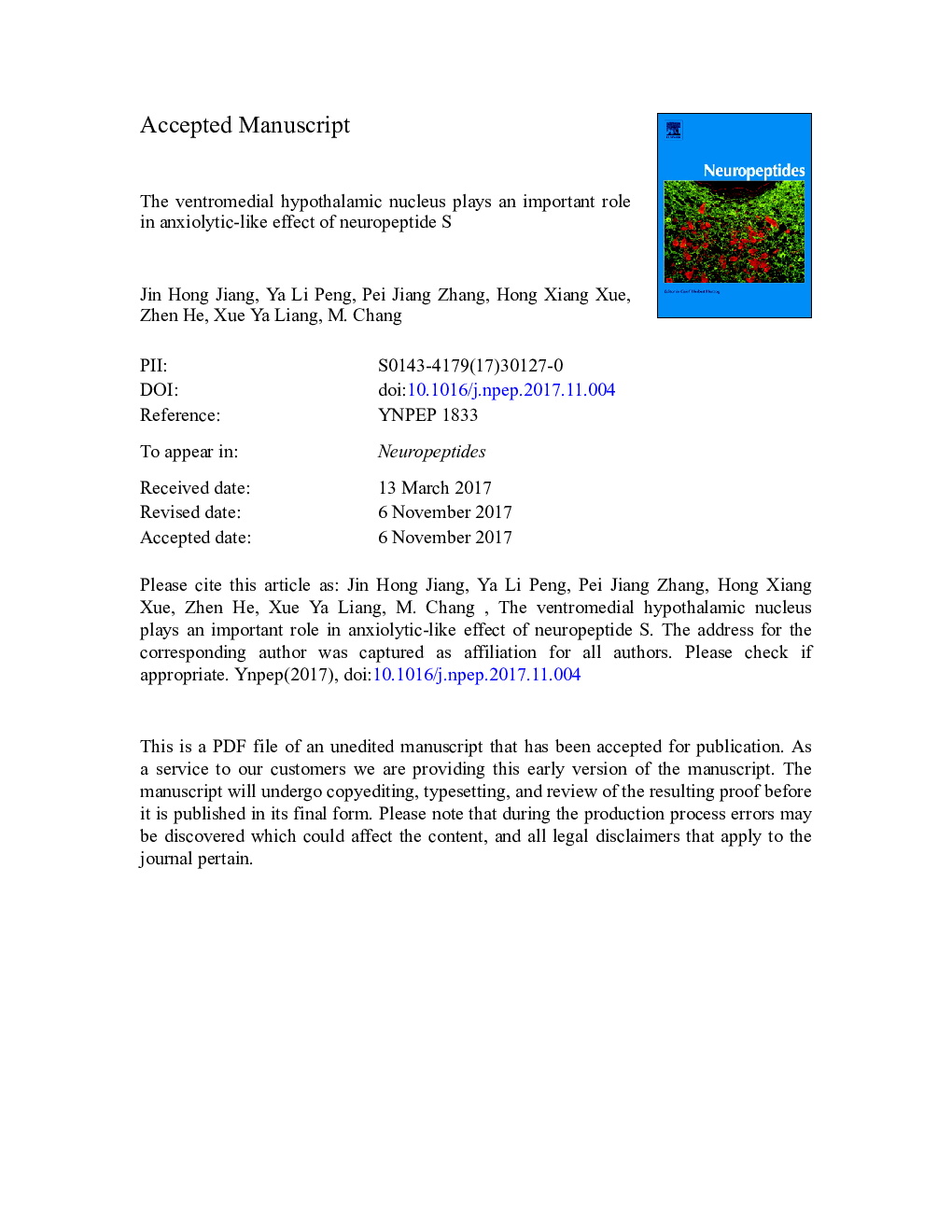| Article ID | Journal | Published Year | Pages | File Type |
|---|---|---|---|---|
| 8633318 | Neuropeptides | 2018 | 28 Pages |
Abstract
Neuropeptide S (NPS), the endogenous neuropeptide ligand of NPSR, has been reported to regulate anxiety-related behavior involved in multiple brain regions, including amygdale, locus coeruleus and Barrington's nucleus. However, little research has been conducted on the anxiolytic-like behaviors of NPS on the hypothalamus, which was an important area in defensive behavior. Here, we investigated a role of hypothalamus in anxiolytic-like behaviors of NPS. We found that NPSR protein of mouse distributed mainly in the ventromedial hypothalamus (VMH). And in the single prolonged stress model (SPS), the results showed that NPS mRNA of the mice exposed to SPS was significantly higher than control, while NPSR mRNA was remarkable lower than control in hypothalamus. Further studies found that NPS intra-VMH infusion dose-dependently (1, 10 and 100Â pmol) induced anxiolytic effects, using elevated plus maze and open field tests. These anxiolytic effects could be blocked by NPSR antagonist (SHA68), but not by picrotoxin (a GABAA receptor antagonist) and sacolfen (a GABAB receptor antagonist). Meanwhile, our data showed that the expression of c-Fos was significantly increased in VMH after NPS delivered into the lateral ventricles. These results cast a new light on the hypothalamic nucleus in the anxiolytic-like effect of NPS system.
Related Topics
Life Sciences
Biochemistry, Genetics and Molecular Biology
Endocrinology
Authors
Jin Hong Jiang, Ya Li Peng, Pei Jiang Zhang, Hong Xiang Xue, Zhen He, Xue Ya Liang, M. Chang,
